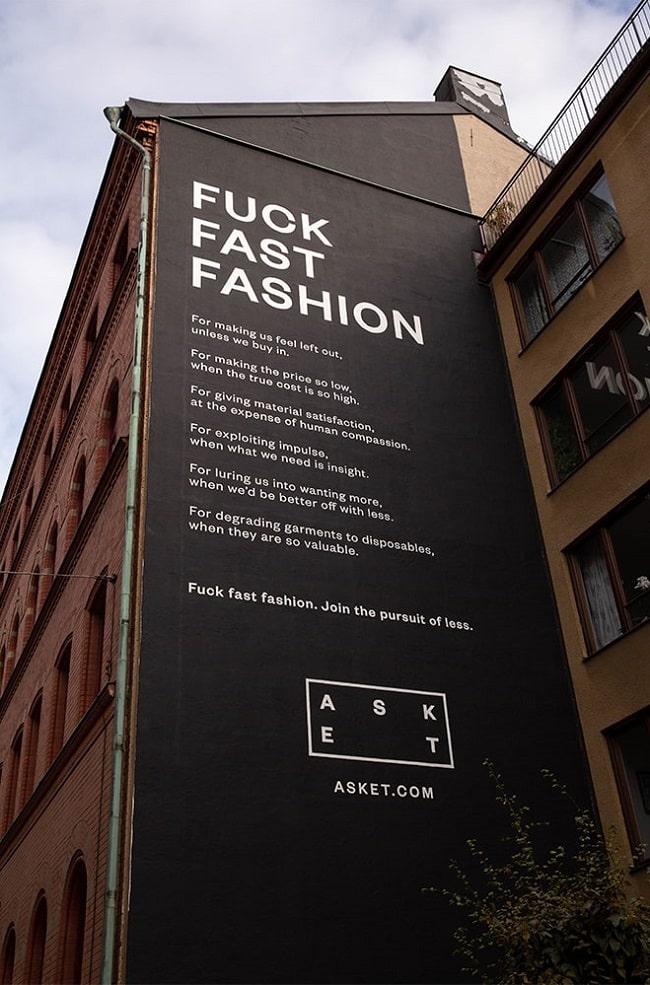1
HOME > Trends >
WHAT IS SEASONLESS MENSWEAR?
Written by Ivan Yaskey in Trends on the 10th September 2020

In July, Virgil Abloh announced new plans for Louis Vuitton. It wouldn’t be a new logo or silhouette – at this point, you’d expect something like that. Rather, Abloh told WWD that he intends to transition the brand’s menswear collections to a seasonless format. Part of the decision relates to the sudden and significant changes brought about by Covid-19. Individuals who would’ve been able to travel to Paris and gather in the audience no longer can do so, at least for the time being. At the same time, the model that has existed for over the past century – couture in Paris before the rest of the world catches on – has become obsolete. Instead, seasonless menswear, to Abloh at least, involves crafting a single collection and presenting it in multiple locations, each with a different angle. For the latest collection, still dubbed Spring/Summer 2021, Abloh debuted it with a physical runway in Shanghai on August 6th, and then intends to take it to Tokyo.
“All the regions of the globe trigger different ideas when you place the epicenter there, and that to me is going deeper in the brain on inclusivity,” Abloh explained to WWD. He went onto say: “It’s 2020. Let’s explore, debuting an idea in this hemisphere and next season we might say, ‘Hey, let’s go the complete opposite.’ Because we’re outside of this idea that Paris has to emanate, and then everyone has to come to Paris and then go back around the world.” Ultimately, Louis Vuitton’s new approach involves bringing the collection to audiences – rather than having much of the audience travel across the globe for a single presentation – and making it readily available on the internet.

Yet, Abloh’s concept is hardly new – even for the SS21 season. Back in May, Alessandro Michele made a similar announcement for Gucci: he intends to use a more “seasonless” format for both collections and runway presentations. Specifically, Gucci will present just twice per year, and the concepts won’t be angled toward Autumn/Winter or Spring/Summer. “I will abandon the worn-out ritual of seasonalities and shows to regain a new cadence, closer to my expressive call,” he wrote in an Instagram post. “We will meet just twice a year, to share the chapters of a new story. Irregular, joyful and absolutely free chapters, which will be written blending rules and genres, feeding on new spaces, linguistic codes and communication platforms.” Covid-19’s shakeups have required fashion houses to examine their approach to production, including where and how they manufacture garments and source fabrics. Nevertheless, while seasonless collections start to seem more practical, the term and concept have been tossed around since 2016 regarding consumer habits, the increasing globalisation of the fashion industry, and sustainability in production and purchasing.

Sustainability
The overarching argument for seasonless menswear and fashion in general comes from sustainability. Up until the pandemic, apparel and footwear industries, both from high-end runway to High Street fast fashion, were operating at breakneck speed, introducing drops and micro trends that evolved every couple of weeks. The pattern further speaks to the industry’s increasing disposability: based on figures from the Waste and Resources Action Programme, the UK alone purchases about 1.13 million tonnes of new clothing per year, up 200,000 tonnes since 2012. This trend means that we all have more garments in our wardrobes that we wear less often: the same study found that the average person wears a garment just five times over a lifespan of 35 days. From here, much of the clothing produced winds up in landfills – and that’s not factoring in the additional energy and resources needed to create it all, and the degree of labour required to fulfil orders. Seasonless fashion, instead, starts to move away from the micro-trend structure we’ve started to see and even does away with seasonal arcs entirely. The goal, here, is to lessen the number of garments someone buys and increase the usage of pieces they already own.

Seasons are Meaningless
For decades, the fashion industry based itself around two general occasions that shaped what was sold and what people wore: Autumn/Winter and Spring/Summer. These gradually grew into pre-season collections, as well as cruise and resort wear. In some cases, major fashion houses have been needing to create about six menswear collections per year – and that’s not including anything on the womenswear side – all of which ends up having a cultural expiration date. Moving away from this approach, Burberry announced all the way back in 2016 its plans to stop producing season-based clothing. The result was a two-part strategy: While Burberry would still present its collections at Fashion Week, the garments didn’t specifically scream “spring” or “autumn,” and could then be purchased online almost immediately after the show, eliminating the four- to six-month wait time typically following a Fashion Week presentation. Beyond just a more reasonable design and production timeline, and a process that starts to emphasise sustainability, this approach creates garments that are free of specific seasonal trends and usage and, therefore, will likely receive more wear. Secondly, it factors in the increasing globalisation of the fashion market, which, for decades, has been based around European and American seasons and acknowledges that certain regions – the Middle East, for instance – don’t experience as great climate fluctuations. Back onto the subject of sustainability, collections specifically dedicated to a season eventually end up on a clearance rack. Or, in the case of SS20’s offerings, we spotted many season-specific styles deeply marked down once April rolled around, because no one was buying and the season was coming to a close, about to roll over into summer. Seasonless fashion, for one, eliminates the time stamp that relegates items to the discount bin after a couple of months. At the same time, this drawn out timeframe will likely decrease the number of garments ending up in landfills or being marked as “deadstock” and the fabric waste involved in their production. Rather, design wise, the lack of time and season connotations ideally keep them relevant for longer.

Greater Focus on Design
Since its inception, Jerry Lorenzo’s Fear of God has essentially been a seasonless brand. Lorenzo hasn’t bothered to use years or seasons; instead, each collection, when it drops, is named based on its order in the series. At the same time, Fear of God manages to be achingly normcore yet still on trend, taking subtle influences from pop culture – hip-hop to Grunge and The Breakfast Club – without being annoying kitschy. The arguments for seasonless menswear ultimately point to the type of model Lorenzo has created for Fear of God – lackadaisical yet exclusive. His approach further exemplifies the fact that brands don’t need to be churning out collection after collection – and coming up with a high-level concept each time. Instead, seasonless fashion doesn’t conceive collections as individual entities that represent a specific point in time. Rather, they build on and mesh with one another, in which spring’s garments relate to winter’s and can be blended in with those from the past few years. Yet, if that sounds suspiciously like minimalist menswear, that’s because it is, to a degree, but it’s more lax: essentially, having versatile basics that, regardless of pattern and colour, manage to work with each other and the designer’s latest offerings. The brand opting for a drop-only structure – as Alexander Wang switched to after bowing out of New York Fashion Week over two years ago – has already started using this model, to some extent. Wang specifically spoke about the trap of reinvention that occurs season about season and, instead, has strived both for consistency and to deliver what the consumer is looking for.

Meeting Consumer Habits
Earlier this year, a group of designers penned an Open Letter to the Fashion Industry, suggesting that the current model’s pace and time of delivery don’t align with how consumers actually shop for clothing. As one specific call to action, the letter recommended that collections should be presented and introduced in their respective seasons to give consumers a frame of reference and avoid the disconnect of dropping a summer collection when there’s still snow on the ground. This way, product isn’t sitting on shelves or an eCommerce storefront months ahead of when most opt to update their wardrobes. While the letter, to some extent, still frames fashion from a season-based perspective, its idea is geared toward seasonless sustainability – introducing items only when consumers truly need and want them, which will slow down current production speeds, likely involve fewer resources, and streamline the supply chain. Similarly, in line with the current climate of uncertainly, digitising shows to reduce travel not only helps individuals socially distance, but it cuts down on the resources and travel needed to put together a traditional fashion show. Yet, the sentiment isn’t entirely novel. Rather, back in 2017, Retail Week’s “Seasonless Fashion: Preparing for a New Era of Retail” report indicated that consumers have been drifting away from seasonal buying. Instead, they’re more interested in the experience and have a see-now, buy-now perspective that’s framed by the weather: if it’s a warm winter, no one’s going to be interested in buying a puffer, so the jacket introduced at the tail end of October is likely going to end up on a clearance rack anyway. In turn, viewing and creating fashion at a modest but still available pace and moving away from strictly seasonal garments better aligns with what today’s shopper seeks out.

Trending
2
3
4
5
6
7
8
9
10










